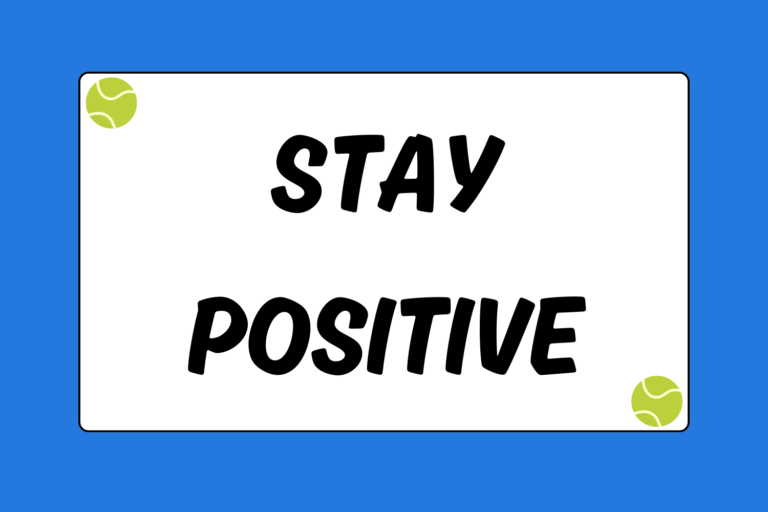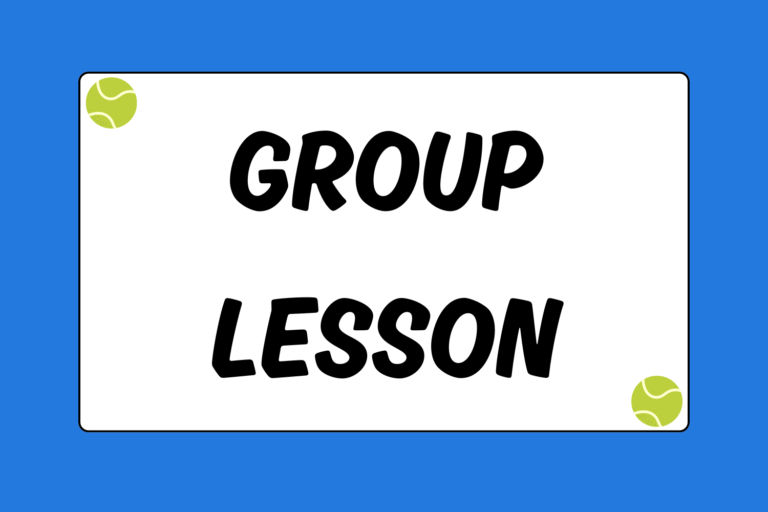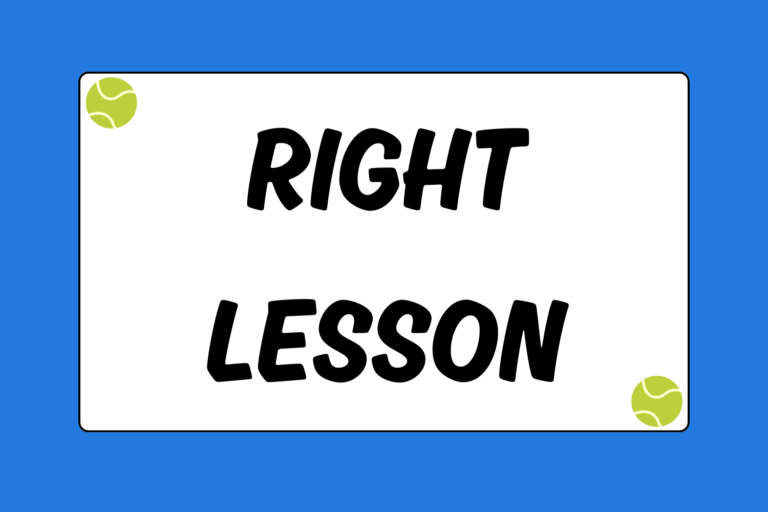Your tennis bag is packed, you
A good warm-up correlates to the exercise that follows, and prepares both the mind and body. So a good tennis pre-match routine should specifically target the muscles that you are going to use when playing tennis. Warming up strengthens you physically for an exhausting match, and prepares you mentally, as well.
This guide outlines a 30- to 35-minute pre-match routine that helps you warm up your muscles, avoid injuries, and build confidence heading into your match.
Running
At least five minutes of cardiovascular activity helps warm up your muscles, increase your heart rate, and strengthen your legs. Jog around the tennis court about five times taking slow, relaxed strides. Once you’ve completed a light jog, it’s time to slightly increase the intensity. Remember, the goal of warming up is to simulate activities that you will see during a match. Running suicides is a great way to imitate the stop-and-go sprinting you will do once the first set begins. Follow these steps to properly execute suicides:
- Line up on the baseline, outside of the doubles alley.
- Sprint to the middle service line, touching the line with your hand, and then quickly switch directions and sprint back to the baseline. Touch the baseline with your hand.
- Change directions and sprint to the singles court sideline, touch the line with your hand, and sprint back to the baseline. Again, touch the baseline with your hand.
- Quickly change directions, and sprint to the opposite doubles alley, touch the line with your hand, and sprint back to the baseline.
- Repeat a total of three times.
Suicides are a great way to improve your endurance, and they involve the same type of bursting speed that a tennis match demands. Now that you’ve got your heart pumping and blood flowing, you’re ready to move on.
Stretching
The short run helps warm up your muscles and make them more receptive to stretching. Stretching cold muscles can lead to injuries, so it’s important to pace yourself during your pre-match workout and maintain a consistent routine.
Stretching increases flexibility, improves circulation, and increases the range of motion of your joints. Having flexible muscles prevents your body from tightening up during your match, and hustling around the court will feel more comfortable and less tiring. Better circulation means blood can easily flow to your muscles, helping speed up the recovery time after muscle tearing. And an improved range of motion of your joints improves your overall balance and ability to move around the court.
Here are some stretching essentials:
- Target the major muscle groups: Focus on your calves, thighs, hips, lower back, neck, shoulders, and forearms. Not only are these muscle groups important for tennis players, but these muscles and joints are routinely used on a day-to-day basis.
- Pace yourself: Don’t grow impatient while stretching or hurry through each exercise. In order to safely lengthen your tissues, hold each stretch for about 30 seconds and then switch to the other side. Do each stretch two or three times.
- Don’t bounce up and down: Bouncing when you stretch can tear your muscles, which can lead to scar tissue as your muscles recover and heal. Additionally, torn muscles make you less flexible and can cause more tightening and pain.
- Relax and breathe comfortably: Stretching should be a soothing and pain-free experience. You should feel some tension while stretching, but if you feel pain or sharp discomfort, try backing off a little bit. Take long, calm breaths and enjoy the process. Like most exercises, do not hold your breath while stretching.
There are many stretches that you should include in your pre-match routine, and you should by no means feel limited to the ones outlined in this guide. Here is a list of stretches that focus on the specific muscles you use in tennis.
Lower-Back Stretch
Swinging a racquet is a repetitive motion that twists and rotates the spine,so you need to target your lower back. Slowly pull your knee towards your chest, and switch legs once you have held this position for at least 20 seconds. Repeat this stretch three or four times on each side.
Figure-Four Stretch
Lie on your back with both feet in the air. Cross your right ankle over your left knee, and grab behind your left knee with both hands. Pull your knee towards your chest and hold for 20-30 seconds. You should feel a stretch deep in your hips.
Posterior shoulder stretch
Stand upright and cross one arm over your body. Using the opposite arm, pull the elbow of the arm being stretched towards the opposite shoulder, and hold for 20-30 seconds. Switch arms and repeat three or four times on each side.
Tricep stretch
Stand straight up and bend your right arm at the elbow and touch the top of your shoulder blade with your fingers. Reach over the top of your head with your left arm and grab your right elbow. Gently pull with your left arm, and hold for 20-30 seconds on each arm.
Forearm/wrist stretch
Stand straight up and hold your right arm out so that it’s parallel to the ground and your palm is facing up. With your left hand, gently pull back on the fingers of your right hand. Hold this stretch for 20-30 seconds and switch arms.
Short-Court
After stretching, begin the stroke warm-up by hitting short-court with your opponent. Both players should stand about five feet (one and a half meters) inside of the service lines and hit volleys, half-volleys and short groundstrokes. During this warm-up, you should focus on the fundamentals that you have worked on with your coach, while also mentally preparing yourself for the upcoming match.
You should spend no more than five minutes hitting short-court, but during this time you will warm up your strokes, get your blood flowing, and assume a more focused mindset.
Groundstroke and Volley Warm-Up
Gradually move back to the baseline after you’ve hit short-court for a few minutes. The next 10 minutes should be focused on hitting forehand and backhand groundstrokes, varying the spin, pace and depth of each shot. For example, concentrate on hitting balls deep and near the baseline for about 10 shots, and then alternate to hitting balls with less pace but more topspin.
After hitting enough groundstrokes, move in to about a foot or two (roughly a half meter) behind the service line and warm up your volleys. Spend at least five minutes hitting forehand and backhand volleys and overheads, focusing on punching the ball firmly and maintaining control.
Serving
Now that you’ve warmed up all of your strokes, it’s time to focus on your serve. Serve to both the deuce and ad courts for two to four minutes, alternating between flat, topspin and slice serves. Practicing the different types of spin serves is a great way to sharpen your second serve and feel more confident heading into the match. A weak second serve can leave you vulnerable, so do not neglect slicing the ball during your warm-up.
Also, make sure you vary where you hit the ball. Try serving down the “T” for a few shots, and then out wide. Hitting the ball hard doesn’t mean you’re a great server. If your serve is predictable and your opponent can easily locate it, you’re wasting a really good opportunity to win games.
Hot Tip: Take Notes
If you’re hitting with your opponent during warm-ups, use that time to analyze his/her game. Take mental notes of their style of play, weaknesses, strengths, and tendencies. Do they have a better forehand or backhand? Does he/she like hitting at the net? Warming up is a great way to loosen up your muscles and transition into a competitive frame of mind, but don’t waste the opportunity to evaluate your opponent.
Game Time
Once you’ve completed your warm-up, take a breather and sit on the bench or in the locker room. Spend some time cooling down, and if you need to change into dryer clothing, do so. After drinking some water and taking a 5- to 10-minute break, head back out onto the court. You should be energized and ready to play winning tennis.
Personal Preferences
Always adjust your pre-match routine to fit your personal needs. If you have a bad shoulder, take extra time to stretch it and spend less time focusing on something else. Your warm-up should tailor to your needs, so never feel obligated to a specific routine. Pre-game routines, like playing a match, are a constant learning experience, and you will figure out what works best for you and what isn’t entirely necessary. Warming up is intended to prepare your mind and body so you can avoid injuries, feel energized, and head into your match with confidence.





